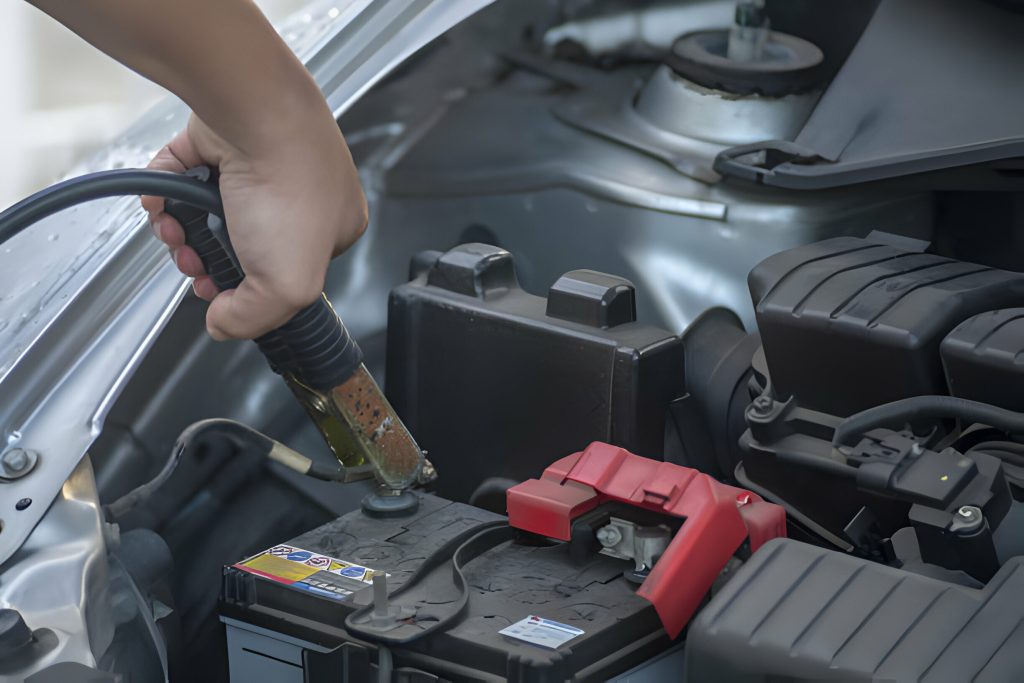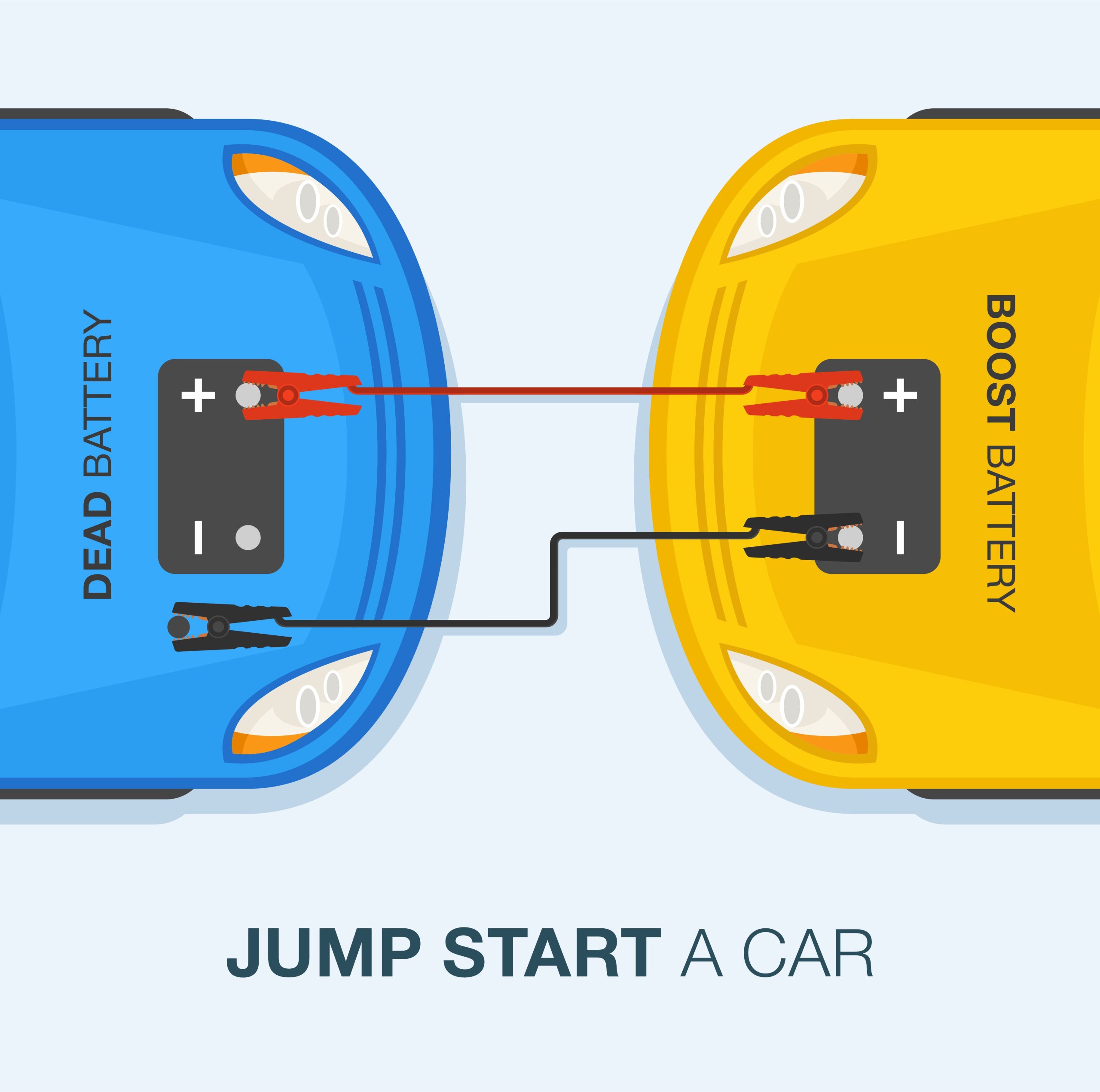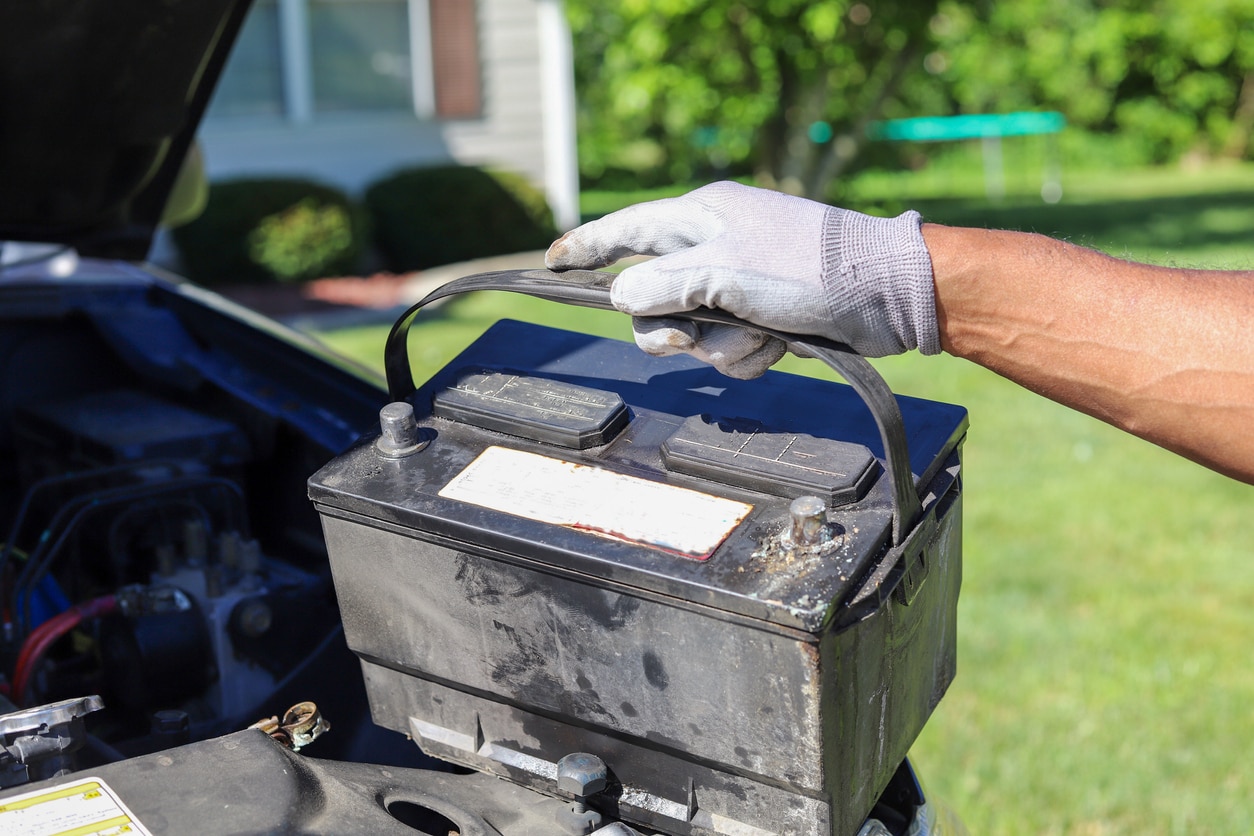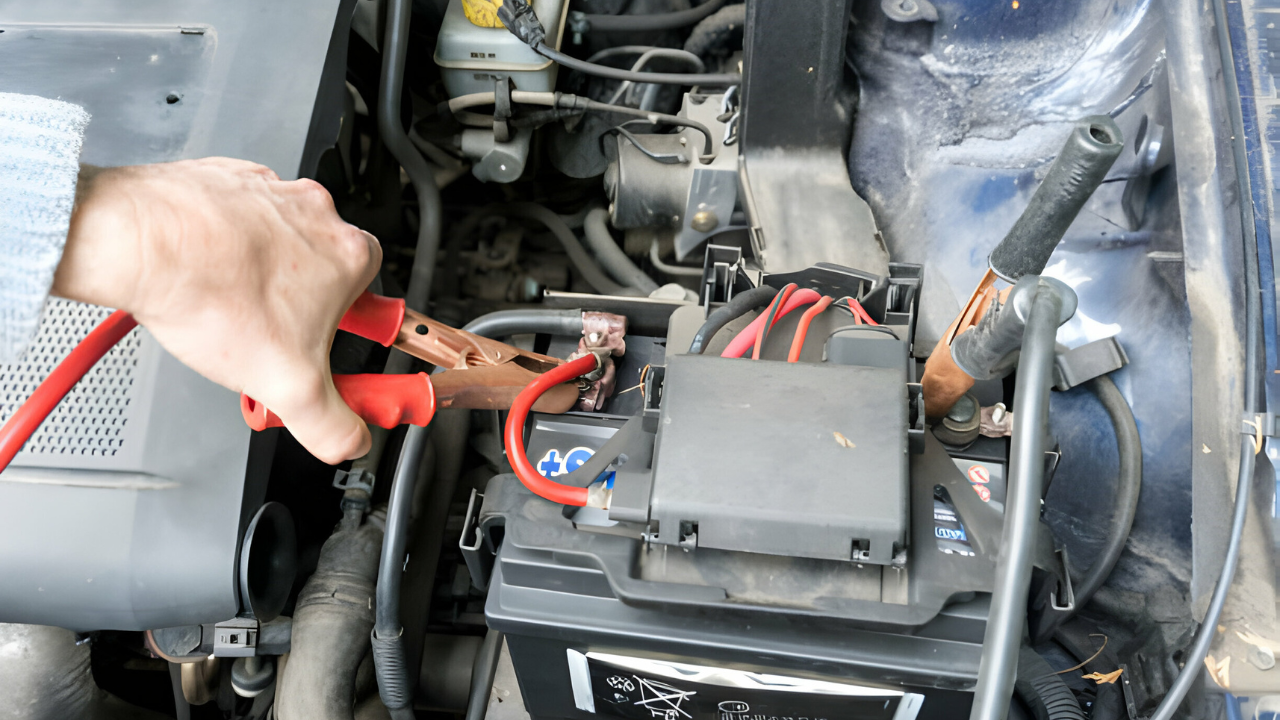When your car battery is dead, you can jumpstart it or call for roadside assistance. Facing a dead car battery can be a frustrating experience, especially if you’re in a hurry or caught off guard.
However, you can quickly get your vehicle back on the road with the right tools and knowledge. We’ll explore the common causes of a dead car battery, steps to jumpstart your vehicle, and tips to prevent future battery issues. Whether you’re a seasoned driver or a new car owner, understanding how to deal with a dead car battery is valuable.
The simple steps and precautions this guide outlines will prepare you to handle this everyday car issue better. So, let’s dive in and learn how to deal with a dead car battery effectively.

Credit: www.interstatebatteries.com
Troubleshooting A Dead Car Battery
Check for warning signs
1. Dim headlights and interior lights.
2. Electrical components not working correctly.
3. Issues with starting the vehicle.
Determine the cause
When troubleshooting a dead car battery, it’s essential to identify the potential cause of the problem. Here’s what to do:
- Check for loose or corroded connections.
- Inspect the age and condition of the battery.
- Assess the alternator’s function.

Credit: www.athensford.com
Jumpstarting The Car
Jumpstarting your car is a quick and effective solution when your car battery is dead and is a valuable skill to have in your automotive toolkit. If you have a pair of jumper cables and access to another car with a functioning battery, you can quickly get your vehicle running again. Here’s a step-by-step guide on how to safely jumpstart your car.
Gather The Necessary Tools
Before you begin, ensure you have the necessary tools: a set of jumper cables and access to another car with a charged battery. Ensure both vehicles are Neutral (for manual gearboxes) or parked (for automatic transmissions) and turned off before starting the process.
Connect The Jumper Cables
- First, connect one end of the red (positive) jumper cable to the dead battery’s positive terminal.
- Then, connect the other end of the red jumper cable to the positive terminal of the working battery.
- Next, connect one end of the black (negative) jumper cable to the working battery’s negative terminal.
- Finally, attach the other end of the black jumper cable to an unpainted metal surface on the dead car’s engine, away from the battery.
Start The Working Car
- Start the car’s engine with the functional battery and let it run for a few minutes. This will help charge the dead battery and prepare it for starting.
- Keep both cars in the same position, without touching, and ensure the jumper cables are not tangled or touching any moving parts of the engine.
Start The Dead Car
- Once the working car has been running for a few minutes, attempt to start the dead car. If it doesn’t start immediately, wait a few more minutes and try again.
- If the dead car starts, keep it running to charge the battery further. You may need to repeat the process or seek professional assistance if it doesn’t start.
- After the dead car is running, carefully remove the jumper cables in the reverse order of how they were connected, ensuring they do not touch each other or any moving parts of the engine.
Replacing The Battery
If you find yourself in a situation where your car battery is dead, fear not! Replacing the battery is a relatively simple process that can be done with just a few tools and the correct battery replacement. Here, we’ll walk you through the steps to get your car up and running again in no time.
Check The Battery Condition
Before replacing the battery, it’s essential to verify that the battery is the cause of the problem. First, look for any indications of corrosion or loose connections on the battery terminals. You can move on to the next step if everything appears in order.
Choose The Right Replacement Battery
Not all car batteries are created equal, so choosing the correct replacement battery for your vehicle is crucial. To find the correct battery, refer to your car’s manual or consult with a professional at an auto parts store. Factors to consider include the battery’s size, power, and compatibility with your vehicle’s electrical system.
Remove The Old Battery
Now that you have your replacement battery, it’s time to remove the old one. Wear safety gloves and goggles to protect yourself from potential hazards. Then, using a wrench or socket set, loosen and remove the negative (-) cable followed by the positive (+) cable from the battery terminals. With the cables detached, carefully lift the old battery from its tray.
Install The New Battery
With the old battery removed, it’s time to install the new one. Ensure the new battery is clean and debris-free before placing it in the battery tray. Next, connect the positive cable to the positive terminal on the new battery, followed by the negative cable to the negative terminal, ensuring the connections are secure.
Once the new battery is securely installed, tighten the terminal connections with a wrench or socket set. Finally, double-check that all connections are correctly tightened and secure.
Now that you’ve successfully replaced your car battery give it a test start to ensure everything is in working order. If the vehicle starts up without any issues, congratulations! You’ve successfully replaced your dead battery and can get back on the road.
Preventive Measures
When maintaining a healthy car battery, taking preventative measures is critical. Following a few simple tips can reduce the chances of having a dead battery and keep your vehicle running smoothly.
Regularly Check The Battery
One of the easiest ways to prevent a dead car battery is to check its condition regularly. Be sure to visually inspect the battery for any signs of damage, such as leaks or corrosion. Additionally, use a voltmeter to check the battery’s voltage levels, ensuring it is within the recommended range. By catching any potential issues early on, you can address them before they lead to a complete battery failure.
Avoid Leaving Electrical Devices On
Leaving electrical devices, such as lights, radio, or GPS, on when the engine is off can drain the battery. Avoid turning off all electrical components before exiting your vehicle to prevent this. Additionally, double-check that all lights are switched off to avoid unnecessary strain on the battery. By developing this habit, you can preserve the battery life and minimize the risk of a dead battery.
Keep The Battery Clean
Maintaining a clean battery is essential for its optimal performance. Over time, dirt and debris can accumulate on the battery terminals, leading to poor electrical conductivity. To prevent this, regularly clean the battery with baking soda and water. Use a wire brush to remove any corrosion or grime from the terminals. Keeping the battery clean can ensure a strong connection and prolong its lifespan.
Alternative Solutions
Discovering that your car battery is dead can be frustrating, especially when you’re in a hurry or far away from immediate help. Fortunately, there are alternative solutions you can explore to get your vehicle back on the road swiftly. This section will discuss two effective methods to help you in such situations: calling for roadside assistance and using a portable car jump starter.
Call For Roadside Assistance
When you’re in a bind and unable to jumpstart your car battery or don’t have the necessary equipment, calling for roadside assistance is a reliable option.
1. Benefits:
- Professional assistance: Roadside assistance companies have professionals with the expertise to handle car battery issues effectively.
- Fast response: These services are available round the clock, ensuring prompt assistance whenever needed.
- Peace of mind: Knowing that help is on the way can reassure you during stressful situations.
2. How to proceed:
- Contact details: Keep the contact information of your preferred roadside assistance service handy before facing any unexpected car trouble. It’s recommended to save the contact number in your phone or keep a physical copy in your car.
- Explain the situation clearly: When you call, describe your car battery as dead so the service provider can send the appropriate help.
- Follow instructions: Once help arrives, follow their instructions to ensure a smooth and efficient resolution to your car battery issue.
Use A Portable Car Jump Starter
A portable car jump starter is a handy device that lets you jumpstart your car without needing another vehicle or calling for assistance.
1. Advantages:
- Convenience: Portable jump starters are compact and easy to carry, providing a convenient solution for dead car batteries.
- Independence: With a portable jump starter, you don’t have to rely on another vehicle or wait for assistance, giving you the independence to resolve the issue on your own quickly.
- Safety features: Most jump starters have built-in safety features to protect against reverse polarity, short circuits, and overcharging, ensuring a safe jumpstarting process.
2. Steps to follow:
- Read the instructions: Familiarize yourself with the user manual of your portable jump starter, ensuring you understand the correct usage and safety precautions.
- Connect the jump starter: Attach the provided cables to the respective positive and negative terminals of your car battery, following the instructions in the manual.
- Start your car: Once the connections are secure, use the jump starter by pressing a designated button or switch on the device.
- Charge the jump starter: After jumpstarting your car, recharge your portable jump starter so it’s ready for future emergencies.

Credit: www.firestonecompleteautocare.com
How to bring a completely dead car battery back to life
Reviving a completely dead car battery can be challenging, and success depends on various factors, such as the age and condition of the battery. Here are some steps you can try, but keep in mind that there’s no guarantee of success, and it’s often recommended to replace a genuinely dead battery for long-term reliability:
- Safety first: Ensure you are in a well-ventilated area and wearing appropriate safety gear, including gloves and eye protection.
- Check the battery’s condition: Inspect the battery for any visible signs of damage, leaks, or corrosion. If the battery case is cracked or leaking, it’s safer to replace the battery.
- Clean the terminals: Use a battery terminal brush or a mixture of baking soda and water to clean the battery terminals and cable connectors. Corrosion can hinder the flow of electricity.
- Jumpstart the battery:
- Connect jumper cables to a working vehicle’s battery.
- Connect the positive (+) cable to the dead battery’s positive terminal.
- Connect the negative (-) cable to a metal part of the car with the dead battery, away from the battery.
- Start the working vehicle and let it run for a few minutes.
- Attempt to start the car with the dead battery.
- Charge the battery: Use a battery charger if the jumpstart is unsuccessful. Follow the charger’s instructions and connect it to the dead battery. Allow it to charge for several hours.
- Desulfation: Sulfation is a common cause of battery failure. Some chargers have a desulfation mode that may help break down sulfate crystals on the battery plates. Follow the charger’s instructions for this feature.
- Epsom salt solution: Sometimes, you can try a DIY solution by dissolving Epsom salt in distilled water and adding it to each battery cell. This may help to rejuvenate the battery, but results vary, and it’s not guaranteed to work.
- Professional battery reconditioning services: Some businesses specialize in battery reconditioning. They may have specialized equipment and techniques to revive certain types of batteries.
Remember, these methods might work for some batteries, but not all. If you’ve tried these steps without success, it’s likely time to replace the battery for reliable and safe vehicle operation.
How to charge a dead car battery at home
Charging a dead car battery at home is a standard and relatively simple process. Here’s a step-by-step guide on how to do it:
- Safety First:
- Ensure you are in a well-ventilated area.
- Wear safety glasses and gloves to protect yourself from any corrosive materials.
- Inspect the Battery:
- Check for visible damage, leaks, or corrosion on the battery. If the battery is damaged or leaking, it’s safer to replace it.
- Gather Materials:
- You’ll need a battery charger. If you don’t have one, consider borrowing or purchasing one suitable for your car battery.
- Choose a Suitable Charger:
- Select a battery charger that matches the voltage of your car battery (usually 12 volts). Some chargers have settings for different types of batteries (standard, AGM, gel, etc.).
- Prepare the Battery:
- Disconnect the battery from the vehicle by first removing the negative (-) cable, followed by the positive (+) cable.
- Clean the battery terminals and cable connectors using a battery terminal brush or a mixture of baking soda and water to remove corrosion.
- Connect the Charger:
- Connect the positive (+) charger cable to the battery’s positive terminal.
- Connect the negative (-) charger cable to the battery’s negative terminal.
- Set the Charger:
- Set the charger to the appropriate voltage and charging mode for your battery. If in doubt, refer to your car’s manual or the battery manufacturer’s recommendations.
- Start Charging:
- Please turn on the charger and let it charge the battery. Charging times can vary, but it’s common for a deeply discharged battery to take several hours to charge fully.
- Monitor the Charging Process:
- Keep an eye on the charger to ensure it’s working correctly. Stop the charging process and consult the charger’s manual if you notice any unusual behavior.
- Disconnect and Reinstall:
- Once the battery is fully charged, turn off the charger and disconnect the cables. Reinstall the battery in your vehicle, connecting the positive (+) cable first, followed by the negative (-) cable.
- Start the Vehicle:
- Attempt to start your car. If it starts successfully, let it run for a while, allowing the alternator to recharge the battery further.
Remember that not all dead batteries can be successfully charged. If your battery refuses to hold a charge or frequently dies, it may be time to consider a replacement for long-term reliability.
Frequently Asked Questions For What Do You Do When Your Car Battery Is Dead
How Do I Know If My Car Battery Is Dead?
If your car doesn’t start and there are no lights or sounds when you turn the key, your battery is likely dead. You can also use a multimeter to check the voltage of your battery if it’s below 12.
6 volts, it’s considered dead.
Can A Dead Car Battery Be Recharged?
Yes, a dead car battery can be recharged with the help of a battery charger or by jumpstarting the car using jumper cables and another vehicle. However, if the battery is old or damaged, it may not hold a charge and must be replaced.
How Long Does It Take To Recharge A Dead Car Battery?
The time it takes to recharge a dead car battery depends on the size and condition of the battery, as well as the charging method used. Generally, it can take a few hours to overnight to fully recharge a dead battery.
How Often Should I Recharge My Car Battery?
It is recommended to recharge your car battery whenever it shows signs of being weak or whenever it takes longer than usual to start your car. Additionally, if you don’t use your car frequently, it is advisable to recharge the battery every 2-3 weeks to prevent it from going completely dead.
How do I start my car with a dead battery?
You can jumpstart your car with a dead battery by connecting jumper cables to your car’s positive and negative terminals and a working vehicle. Start the working vehicle, let it run for a few minutes, and then try starting your car.
How do you make a dead car battery work again?
To revive a dead car battery, use jumper cables to connect it to a working vehicle’s battery. Start the working vehicle, let it run for a few minutes, and then try starting the car with the dead battery.
Can a completely dead battery be recharged?
A completely dead battery may not be rechargeable and may need replacement.
What to do after starting a dead car battery?
After starting a car with a dead battery, let both vehicles run for a few minutes. Then, disconnect the jumper cables in the reverse order of how they were connected. Drive the revived car for at least 20 minutes to recharge the battery.
Conclusion
Staying calm and acting promptly is crucial when faced with a dead car battery. Remember to check for any obvious signs of battery damage and determine if a jumpstart or battery replacement is needed. Regular maintenance and careful usage of your vehicle’s electrical systems can help prevent battery failures in the future.
Stay informed, be prepared, and stay safe on the roads.

I am a technology Specialized writer and blogger based in the USA & UK. I have four years of experience in Technology, Social Media and all types of Battery’s like Solar Battery,Car Battery,Lithium Battery etc. So I work on solving these issues and give various tips on these issues.
